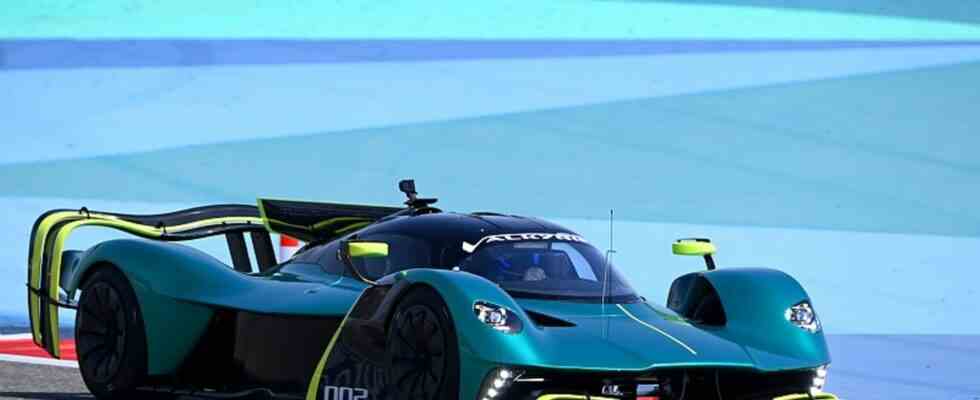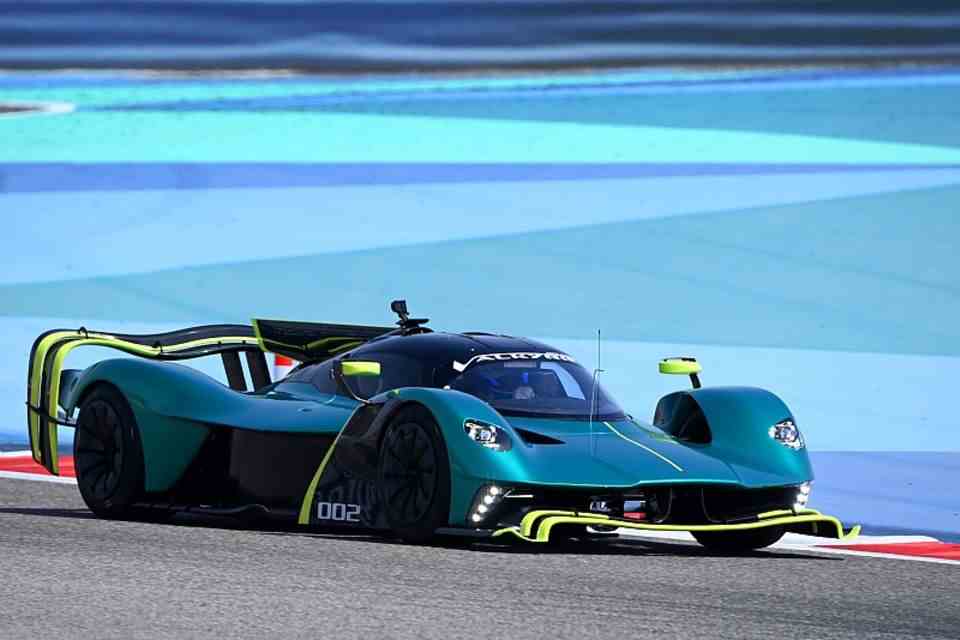Technology
Pit lane exit
Aston Martin Valkyrie
© press-inform – the press office
After initial problems, the automotive world is switching to electric drives faster than many expected. What is easily feasible for private customers in everyday life and sometimes seems difficult for transport companies, presents motorsport with enormous challenges.
Last weekend, two of the world’s largest motorsport events, the 24-hour race at the Nürburgring and the 500 miles of Daytona, took place almost simultaneously. Incidentally, Formula 1 meandered through the narrow streets of Monaco on Sunday afternoon – actually everything as usual. And yet not again, because the gigantic changes in mobility and especially in the field of vehicle drives are no longer leaving the countless international racing series unscathed. Regardless of whether it’s the World Rally Championship, Formula 1, endurance and one-make cups or touring car racing – when it comes to top speeds and the corresponding route lengths, things are currently looking bad for electric drives. A few years ago, Formula E was launched as an electric alternative. After many top manufacturers initially wanted to be present here with their electric monoposti, disillusionment came faster than expected. For most motorsport fans, Formula E, like the related Extreme E off-road series, is perceived purely as a marketing event with no sporting value. Public interest is tiny in most markets – the market relevance is hardly noticeable and the desired image transfer did not materialize anyway. Many brands canceled their multi-million dollar commitment.
But where is motorsport headed in a few years? The renowned Le Mans series is trying to create a new hybrid class of supercars from 2024, and smaller electrifications have been around for years in top classes such as Formula 1 or the Le Mans prototype league. But the broad masses look into the tube and so there is a risk that a major event like the 24-hour race at the Nürburgring will be downgraded to a purely classic event in a few years. Some top manufacturers are already noticeably reducing their commitments – after all, motorsport with roaring cars driving in circles does not fit into the neat image of electric models with ID, EQ, E-Tron or i logos. Manufacturers such as Volkswagen, Audi, BMW, Mercedes, Ford and General Motors have long since spoken out loud in favor of going fully electric in a few years. This is particularly noticeable at Porsche. The Stuttgart company – once a pure sports car company – will electrify every new model that rolls onto the market in the coming years. There will no longer be fresh combustion engines and so the Porsche 911 will remain the lone caller on the road and race track. It will first have to make do with hybridization, but in the long term it should also become an electric model in the 2030s.
That wouldn’t be a problem if the car manufacturers didn’t want to put their latest models and most innovative technologies in the foreground with their own racing commitments. After all, professional motorsport, unlike pure customer teams, is primarily a marketing event like Formula E and also a fast-paced technical laboratory. It is often forgotten that many racing cars are a profitable business area for car manufacturers. Brands such as Mercedes-AMG or Porsche sell their highly equipped high-tech athletes to global teams at a profit – especially because spare parts and components also make the ruble roll on the race weekend. The Mercedes AMG GT3, which is to be phased out this year, is one of the most successful touring cars in the world with more than 220 vehicles. With a Porsche 911 GT3 or an Audi R8 LMS, it is hardly any different, and Aston Martin, Lamborghini, Aston Martin or General Motors with their Corvette do not operate motorsport as a subsidy business, but as profitable and image-generating weekend fun between Bathurst, Le Mans, Daytona or Suzuka.
Meanwhile, most agree that there will be no purely electric circuit races and especially medium or long-distance races such as in Formula 1, Le Mans Series, Indycar / Nascar or touring car cups in the foreseeable future. In addition, the batteries lose their power too quickly under full load and recharging takes too long – a killer for the audience and the end of the race. It would be conceivable that the battery packs of the electric car could be exchanged like when changing a tire or, in the case of shorter races, a particularly fast boost would allow the then hybrid racing car to be recharged – ideally perfectly staged for the motorsport fans at the track and on TV. For the professional teams and race commitments, this seems feasible, at least in the medium term. However, the situation is different for broad motorsport. There is a danger here that such racing events will degenerate into pure classic events, at least from the beginning of the coming decade. But maybe then a 24-hour race at the Nürburgring, in Le Mans, Daytona or Spa will have its very own appeal. They are already among the highlights of each race weekend, as not only the events at Le Mans, Laguna Seca or at the Nordschleife show.
But what about off the beaten track? Rallying is more popular than ever in southern and northern Europe or South America, and the extreme event of the Dakar Rally is also a big public topic at the beginning of every year. Here, Audi is attempting a difficult balancing act with its RS Q E-Tron, an electric buggy powered by a battery pack that is powered by a DTM engine as a range extender to peak sporting performance. That could also be an alternative for electric motorsport – even if only away from the circuit. The fuel cell, on the other hand, hardly stands a chance. Even if manufacturers such as Toyota or Honda keep making new attempts to make the fuel cell suitable for motorsport – the chances are currently anything but good. This also threatens for normal motorsport, because there is currently hardly any solution for the most popular racing events in the world, where the journey could go, at least in the coming decade.


